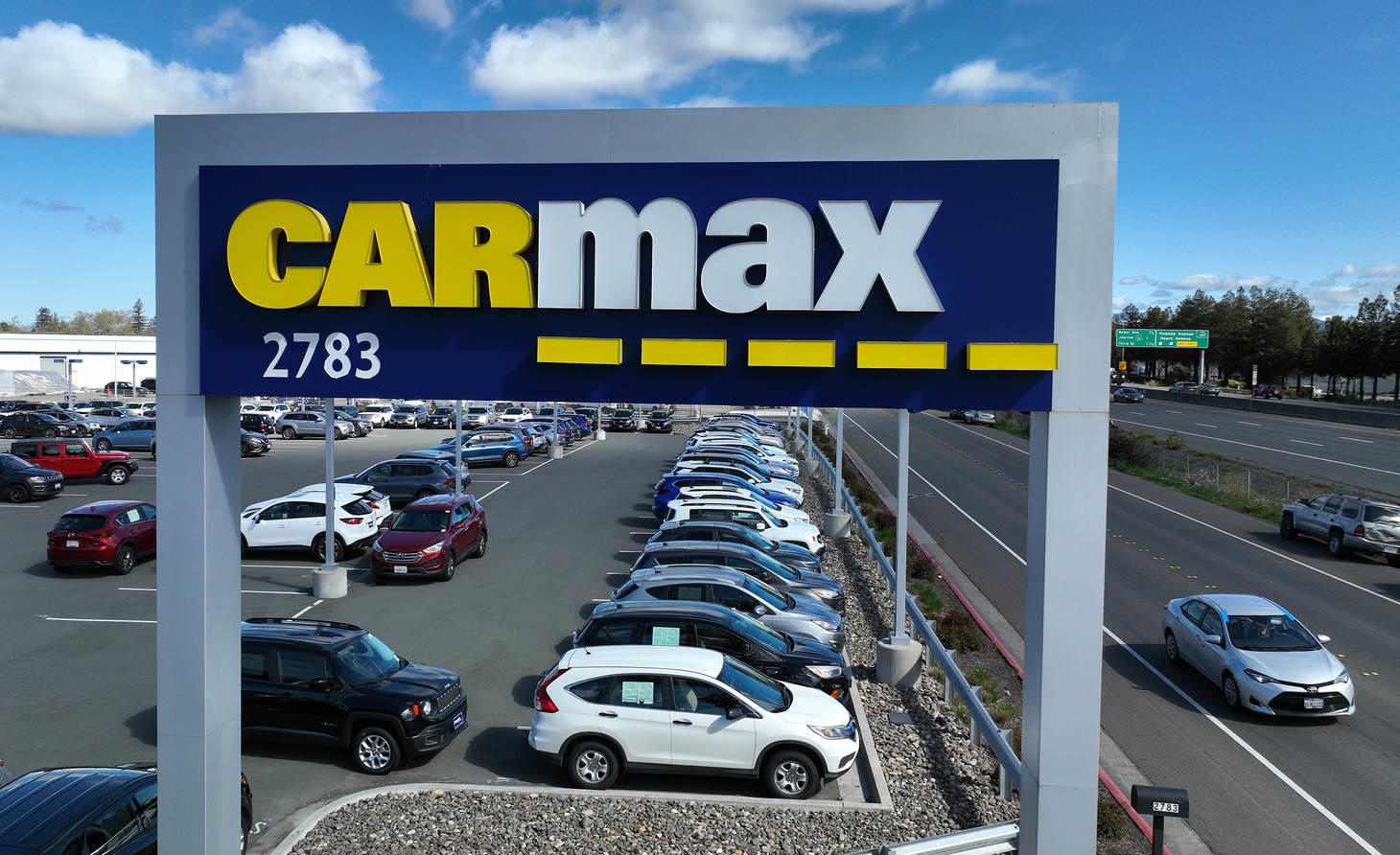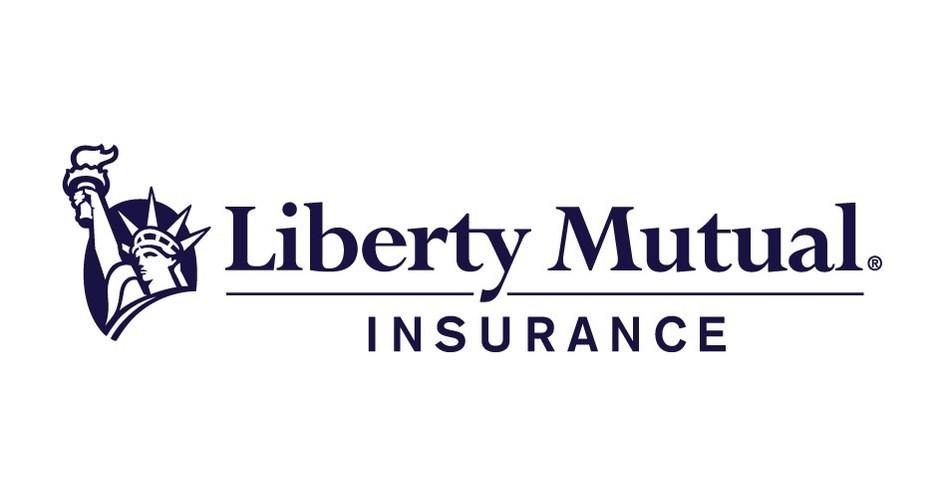News

CarMax stock falls 24% as CEO steps down, releases outlook
KEY POINTS
- CarMax Inc. stock fell sharply during intraday trading Thursday after the used car retailer announced the unexpected departure of CEO Bill Nash.
- CarMax said board member David McCreight, a retail clothing executive who has served as CEO of Lulu's Fashion Lounge Holdings, will serve as interim CEO

Commercial Insurance Market Shifts to Buyer-Friendly Conditions in Q3 Despite Rising Nat Cat Losses
Property rates decline by double-digits while global disaster claims approach $100 billion in first half of 2025, Aon reports.
The global commercial insurance market delivered double-digit rate reductions for preferred property risks in Q3 2025 as competitive dynamics intensified, even as insured losses from natural disasters approached $100 billion in the first half of the year—the second-highest on record, according to Aon’s latest market insights report.
U.S. commercial insurance buyers experienced significant pricing relief across most product lines as insurers pursued growth ambitions amid ample capacity and easing reinsurance conditions, according to Aon’s report. Property insurance led the downward trend with double-digit percentage decreases for preferred risks in several markets, while cyber rates continued declining though at a more moderate pace. Directors and officers liability insurance maintained its soft market trajectory despite signs of price flattening in lead layers.
The competitive commercial lines environment extended beyond pricing as underwriters showed increased flexibility, often reconsidering risks they previously declined. Local markets attracted new entrants while international insurers and reinsurers expanded their presence, creating oversubscription scenarios for preferred risks. Workers’ compensation sustained its long-term downward pricing trend, contrasting sharply with automobile and excess liability lines where rates continued climbing due to persistent loss severity.
InsurTech/M&A/Finance💰/Collaboration
Global InsurTech Report for Q3 2025 | GallagherRe
The 2025 series of Global InsurTech reports examine the role of Artificial Intelligence (AI) in our industry, exploring its application and use cases in the largest classes of business written (in premium terms). This third report in the 2025 series will focus on commercial insurance.
VIEW REPORT Specifically, we will assess the ways in which InsurTechs are attempting to use AI to revolutionize this major line of (re)insurance business, the extent to which they have been successful and the expectations for the future. We will look both at InsurTechs who are working with incumbent carriers, and also those businesses that are offering their own standalone solutions.
The report also examines and provides insights into the performance of the InsurTech market during Q3 of this year. Overall, this quarter has shown a continuation of the steady trend in funding volume that we have observed over the past few years. Despite a small quarter on quarter decline, global InsurTech funding was USD1.01B in Q3 2025; within a 10% marginal swing of the USD1.1B mean average we have been observing over the past three years.
The points below show a summary of InsurTech funding activity for the third quarter of this year.
Key findings for Q3
- Global InsurTech funding was USD1.01 billion in Q3 2025
- InsurTech saw just 76 deals in Q3 2025, the lowest count since Q2 2020
- Early-stage InsurTech funding ticked up 6.8% quarter on quarter
- 74.8% of Q3 2025 InsurTech funding went to AI-centered companies
- Commercial-focused InsurTechs raised USD470.67 million in funding over Q3'25
- (Re)insurance companies backed 51 tech investments in Q3'25 — a record high

Global insurtech funding slips as L&H deals plunge – Gallagher Re
Fewer deals and investors mark a challenging quarter, even as average deal sizes climb
Global insurtech funding underwent a slump in the last three months as it decreased 7.9% quarter over quarter to US$1.01 billion in the third quarter, according to Gallagher Re’s latest report.
The decline was primarily attributed to the life and health (L&H) insurtech segment, which saw funding fall 56.8% to US$314.75 million.
Nearly a third of L&H insurtech funding in the quarter was directed to Employee Navigator, an employee benefits platform that secured the only US$100 million-plus mega-round deal for the period.
In contrast, property and casualty (P&C) Insurtech funding rose 90.5% from a seven-year low in the previous quarter, reaching US$690.28 million in Q3 2025. Eight of the ten largest deals by funding amount were raised by P&C insurtechs, with four companies each securing deals of US$50 million or more.
The average deal size increased from US$12.83 million in Q2 2025 to US$15.70 million in Q3 2025, a change driven mainly by a decline in the total number of deals. Insurtech recorded just 76 deals in the third quarter, the lowest count since Q2 2020. This drop in deal count coincided with a broader decline in the number of active Insurtech investors, which fell to 186, the lowest since Q4 2017.

North American insurance deal activity grows in Q3, even as total value drops | S&P Global
The number of North American insurance deals increased in the third quarter of 2025 compared to the first two quarters of the year, even as the industry's aggregate transaction value fell.
Insurance underwriters and brokers were involved in 150 third-quarter deals totaling $5.60 billion in aggregate, compared to 136 transactions totaling $9.97 billion in the second quarter and 132 transactions totaling $6.68 billion in the first quarter, according to an analysis by S&P Global Market Intelligence.
Insurance M&A trends contrasted with the the broader US and Canadian markets, where transaction value increased but deal totals decreased.
Overall, North American M&A deals announced from July through September were collectively valued at $608.39 billion, up nearly 50% from the second quarter, according to S&P Global Market Intelligence data. The aggregate deal value was higher even as the number of transactions edged down by a bit more than 1%.
Financial Results

Allstate's total revenues reach $17.3bn in Q3'25 amid lower cat losses
Allstate Corporation reported total revenues of $17.3 billion in Q3 2025, up $628 million, or 3.8%, from the same quarter in 2024.
Net income applicable to common shareholders reached $3.7 billion in Q3 2025, compared with $1.2 billion in Q3 2024, reflecting strong operating performance across the enterprise.
Catastrophe losses also declined to $558 million in Q3 2025, down from $1.7 billion in the same period last year.
Consequently, Allstate’s underlying combined ratio for the quarter stood at 78.7%.
In the Property-Liability segment, earned premiums rose 6.1% to $14.5 billion, driven primarily by higher average premiums and growth in policies in force
Underwriting income in this segment surged to $2.9 billion, up from $495 million in Q3 2024.
In Allstate’s Protection Auto business, written and earned premiums increased 3.5% year-over-year.
Auto insurance policies in force continued to grow, supported by expanded distribution, increased marketing, new products, and sophisticated rating plans.
For the Protection Homeowners segment, underwriting profit climbed to $1.1 billion, compared with $60 million in Q3 2024, benefiting from lower catastrophe losses and strong underlying margins.
Written and earned premiums rose 13.1% and 14%, respectively, driven by higher average premiums and growth in policies in force.

Liberty Mutual Insurance Reports Third Quarter 2025 Results
Liberty Mutual Holding Company Inc. and its subsidiaries (collectively "LMHC" or the "Company") reported net income attributable to LMHC of $2.223 billion and $5.093 billion for the three and nine months ended September 30, 2025, versus income of $892 million and $3.144 billion for the same periods in 2024.
"We delivered exceptional third quarter results, with net income attributable to LMHC of $2.2 billion and a consolidated combined ratio of 84.7%, reflecting strong underwriting and investment performance," said Tim Sweeney, Chairman and Chief Executive Officer.
"Our combined ratio improved 12.0 points year-over-year, underpinned by favorable frequency trends in U.S. personal lines and lower catastrophe losses across both insurance businesses. Investment results remained strong, benefiting from higher reinvestment rates and robust performance in private assets, particularly private equity. As our underwriting actions take hold, we will remain disciplined in pursuing profitable growth."
.

Root (NASDAQ:ROOT) Surprises With Strong Q3
Digital auto insurance company Root (NASDAQ:ROOT) announced better-than-expected revenue in Q3 CY2025, with sales up 26.9% year on year to $387.8 million. Its GAAP loss of $0.35 per share was 35.8% above analysts’ consensus estimates.Digital auto insurance company Root (NASDAQ:ROOT) announced better-than-expected revenue in Q3 CY2025, with sales up 26.9% year on year to $387.8 million. Its GAAP loss of $0.35 per share was 35.8% above analysts’ consensus estimates.
Is now the time to buy Root? Find out in our full research report.
Root (ROOT) Q3 CY2025 Highlights:
- Net Premiums Earned: $360.1 million vs analyst estimates of $342.6 million (28.9% year-on-year growth, 5.1% beat)
- Revenue: $387.8 million vs analyst estimates of $371.2 million (26.9% year-on-year growth, 4.5% beat)
- Combined Ratio: 102% vs analyst estimates of 107% (495 basis point beat)EPS (GAAP): -$0.35 vs analyst estimates of -$0.55 (35.8% beat)
- Market Capitalization: $1.22 billion

Lemonade reports record Q3 growth and path toward profitability
Lemonade posted its strongest quarterly performance to date, showing accelerating growth, improving loss ratios and progress toward profitability. The company credited its use of artificial intelligence (AI) for helping it scale efficiently while maintaining cost discipline.
In Q3 2025, the company said its in-force premium (IFP) rose 30% year over year to $1.16 billion, marking the insurtech's eighth consecutive quarter of accelerating growth. Gross profit more than doubled to $80 million, while gross profit margin improved by 14 percentage points to 41%.
Adjusted EBITDA loss narrowed 48% year over year to $26 million, and net loss improved 45% to $38 million. The company also reported $18 million in adjusted free cash flow and $5 million in operating cash flow, underscoring a steady move toward positive earnings.
Two years ago, Lemonade was growing IFP at 18% with a 19% gross profit margin and a net loss equal to 36% of gross earned premium. By Q3 2025, IFP growth had accelerated to 30% and margins more than doubled to 41%, while net loss as a percentage of GEP improved to 14%. The company maintained a 3:1 lifetime value to customer acquisition cost (LTV/CAC) ratio, with marketing spend more than tripling. AI-driven segmentation and pricing helped offset higher spending by keeping operating costs nearly flat.
Claims

Startup Swimming With Whales In Auto Salvage Auction Waters
Auto Insurance Report highlights Salvato as alternative total loss insurance vehicle alternative to Copart and IAA
The thousands of acres that salvage auction operators Copart and IAA have collected over decades to store vehicles have long been seen as an insurmountable moat protecting the duopoly from new competitors.
But a startup believes that decentralizing vehicle storage itself provides a path over that obstacle. The company, Salvato, sees its approach as the logical next step in an evolution that began when the industry eliminated in-person auctions years ago.
Salvato is launching online salvage vehicle auctions with a strategy to cut fees and cycle times by selling cars directly from towing company lots, rather than moving them to huge storage facilities like those largely owned by Copart and mostly leased by IAA.
Salvato opened its first online auctions in Texas in August, selling cars from small insurers in the state. The company has recruited a growing list of more than 30 towing companies in Texas to collect and store totaled cars from body shops or other storage lots until they sell online.
The business expects to sharply improve cycle times, reducing the number of days cars sit waiting to enter auction by using digital titles issued by the new National Digital Title Clearinghouse in West Virginia. The clearinghouse creates digital titles that allow cars from any state to be retitled as salvage and sold legally across the country or overseas, saving weeks of processing time required with paper titles. (AIR 8/11/25)
Salvato will need to move fast to convince skeptics who view vast landholdings as a necessity, and Salvato acknowledges that even with its commitment to a decentralized model it will likely need some parcels near strategic metropolitan areas down the road.
Claims discipline – a key differentiator in next market phase
With the industry deep in conference season, there is inevitably much talk about the trajectory of rates. After several years of hardening, signs of softening are visible across various classes, with brokers pressing for relief on behalf of their clients. Yet, for reinsurers looking ahead, the debate over pricing is only half the story. The real differentiator in the coming year will be discipline in claims and more so than in underwriting.
As a mechanism that responds after the fact, claims has historically been viewed as defensive. However, with claims increasing in both scale and frequency, claims departments are playing a much more offensive role – as the industry’s first lens on emerging risks, the sharpest indicator of systemic stress and a rich source of intelligence about how exposures develop in real time.
This insight can add enormous value, particularly during the early stages of a claim. It further reinforces the collaborative alliance between claims, underwriting and the client, with claims data also sometimes contributing to more favourable pricing for cedants.
Given the many surprise claims of recent years, there is unquestionably a need to grasp the variables and dynamics producing them more firmly. Pricing alone cannot mask poor business, with reinsurers unable to price their way out if they’re getting $100 in premium for every $1m loss. With claims able to identify trends early, highlight potential improvements in cedents’ loss management and flag when litigation risk is escalating, this can help keep portfolios viable as rates begin to soften.
Iain Reynolds, head of reinsurance claims, Liberty Mutual Reinsurance and James D'Onofrio, executive vice president & general manager of US operations, Liberty Mutual Reinsurance

Avallon Secures $4.6 Million, Scales AI Agents to Automate Insurance Claims Operations
Frontline Ventures leads the seed round, backs company’s agentic workflow technology for TPAs and carriers facing critical staffing shortages
Avallon, the company building AI agents that automate repetitive insurance claims tasks, today announced it has secured $4.6 million in seed funding, led by Frontline Ventures with participation from Y Combinator, 1984, Liquid2, and Booom. The capital will be used to hire talent and accelerate product development, expanding beyond bespoke solutions for the Workers Compensation and Automotive insurance categories to offer a comprehensive AI platform for every line of insurance including all Property & Casualty lines, as well as healthcare. /
Avallon Co-Founders Leander Peter, Moritz Bartusch, Cornelius Schramm, and Bryan Guin (pictured)
According to the U.S. Bureau of Labor Statistics, the insurance industry is expected to lose nearly 400,000 workers through attrition by 2026, presenting a critical staffing shortage. Avallon’s AI agents address the threat of rising turnover rates by automating back office work to bridge the worker gap.
Avallon’s multimodal AI technology creates structured claims data for Third-Party Administrators (TPA) and insurance carriers, integrating with most major CMS platforms, IVR systems and data warehouses. Its AI voice agents address operational bottlenecks and automate operational tasks across the claims lifecycle from intake to resolution, including:
- managing intake, status and billing questions by phone, email or file upload
- tracking case status, contacting employers, providers, repair shops and injured workers
- summarizing and extracting information from critical insurance documents such as PDFs, invoices and medical reports
- analyzing policy terms and flagging exposures
Cyber Risk
Forrester: Cyber Insurance Will Grow by 15% in 2026
Forrester Research predicts written cyber insurance premiums will rise 15% in 2026 as new artificial intelligence threats and data demands emerge.
In a new report, analysts at the global market research company anticipate the widespread adoption of AI to reverse the cyber market’s recent deceleration. When asked why, Rohit Makhijani, a principal analyst at Forrester, said that implementing AI increases threat surface area.
“If you’ve got a bigger house, you’re going to need more insurance,” he explained in a phone interview. “There’s more to lose.”
Makhijani added that AI is enabling malicious actors to become more sophisticated.
The technology has become “a weapon for bad actors” and a target itself, he said. AI’s potential to create and accelerate new threats from cybercriminals is outpacing the defensive capabilities of many organizations, the report’s authors concluded, leading to an increase in successful attacks.
